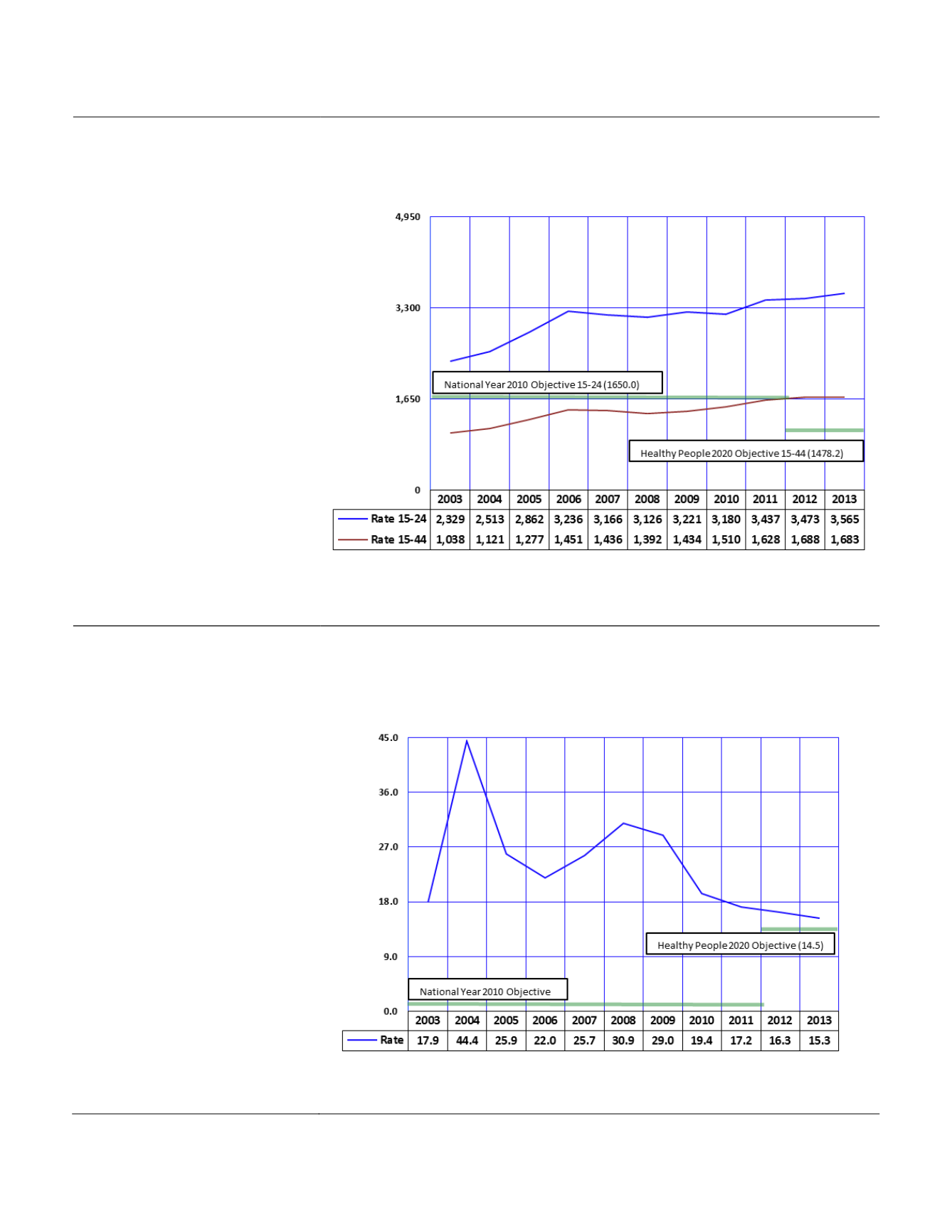
3B. SEXUALLY TRANSMITTEDDISEASES
Chlamydia trachomatis
is the most
prevalent
bacterial
sexually
transmitted disease in the United
States (1,422,976 cases in 2012),
with the highest rates reported
among adolescents and young
adults (
Table 3B-4
). Recent
availability of sensitive tests for
chlamydia
using DNA amplification
technology undoubtedly contributed
to the increase in the number of
reported cases in Arizona over the
last decade (
Figure 3B-3
,
Table
3B-1
).
The incident rate of chlamydia was
previously reported for females 15-
24 years, however based on
changes in
Healthy People 2020
, it
would be reported for females 15-
44 years. The
Healthy People 2020
goal for chlamydia is set at 1,478.2
per 100,000 females. The incidence
rate for Arizona in 2013 was 1,683
per 100,000 for females age 15-44
years (
Table6A-2
).
Figure3B-3
Trends in the IncidenceRates
a
of Chlamydiaamong Females 15-24
and15-44Years, Arizona, 2003-2013
Notes:
a
Number of reported cases per 100,000 females; Therewas a change in target rate and age range for Healthy People 2020
objective. In National Year 2010 objectivewas for females ages 15-24. In Healthy People 2020 objective is for females ages 15-44.
R
Congenital syphilis
(CS) is an
infection caused by the spirochete
Treponema pallidum
, which can be
passed from the mother to child
during fetal development or birth.
Not all infants born to infected
womenwill be infected.
In 1988, CDC implemented a new
CS case definition. It no longer
relies on documentation of infection
in the infant; rather, it presumes
that an infant is infected if it cannot
be proven that an infected mother
was adequately treated for syphilis
before or during pregnancy.
The
Healthy People 2020
goal for
congenital syphilis is 14.5/100,000.
In Arizona, the incidence rate of CS
decreased for a fifth consecutive
year from 30.9/100,000 in 2008 to
15.3/100,000 in 2013 (
Figure 3B-
4
,
Table6A-2
).
Figure3B-4
Trends in the IncidenceRates
a
of Congenital Syphilis byYear,
Arizona, 2003-2013
Note:
a
Number of reported cases per 100,000 births.
Arizona Health Status and Vital Statistics 2013
217


